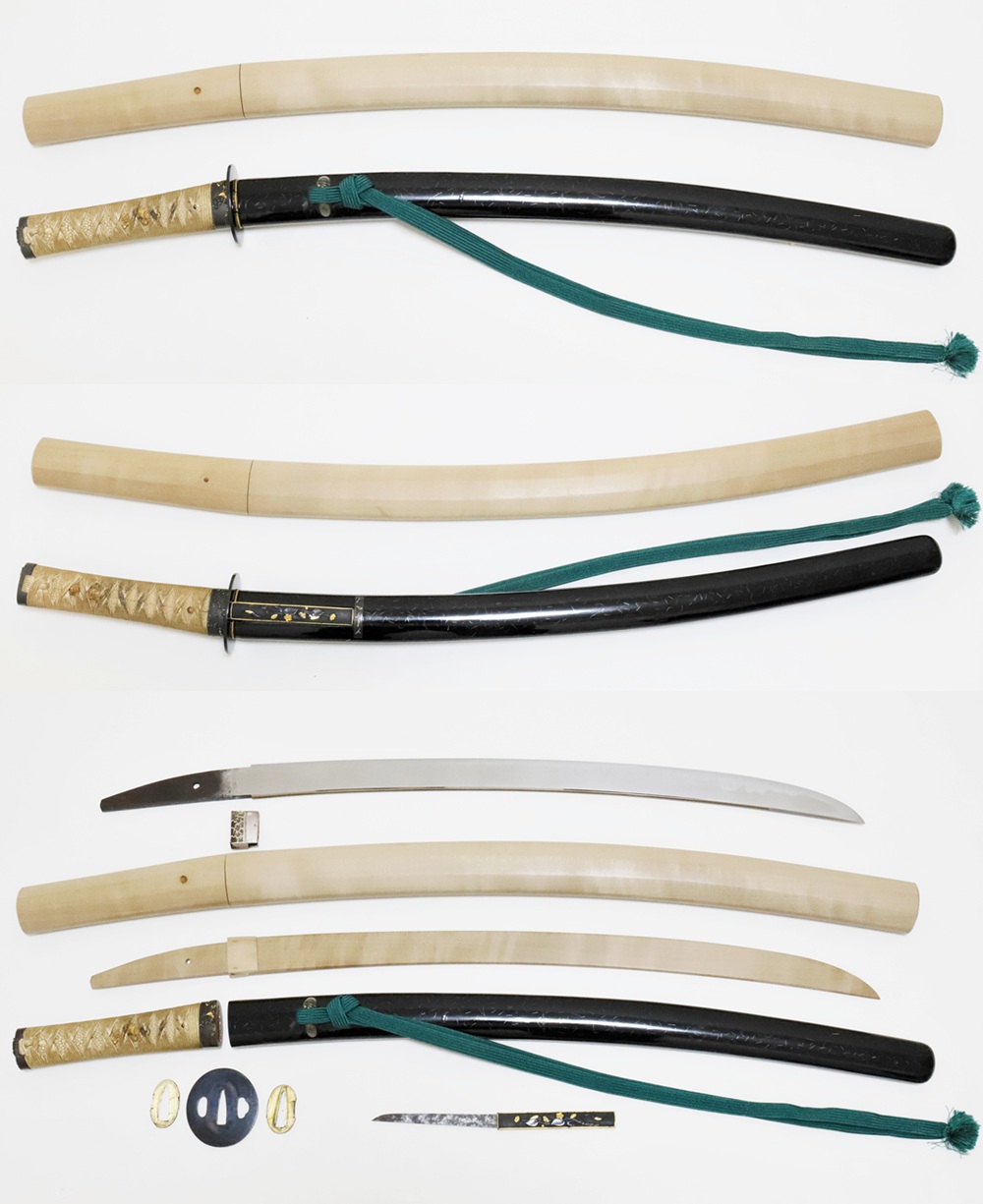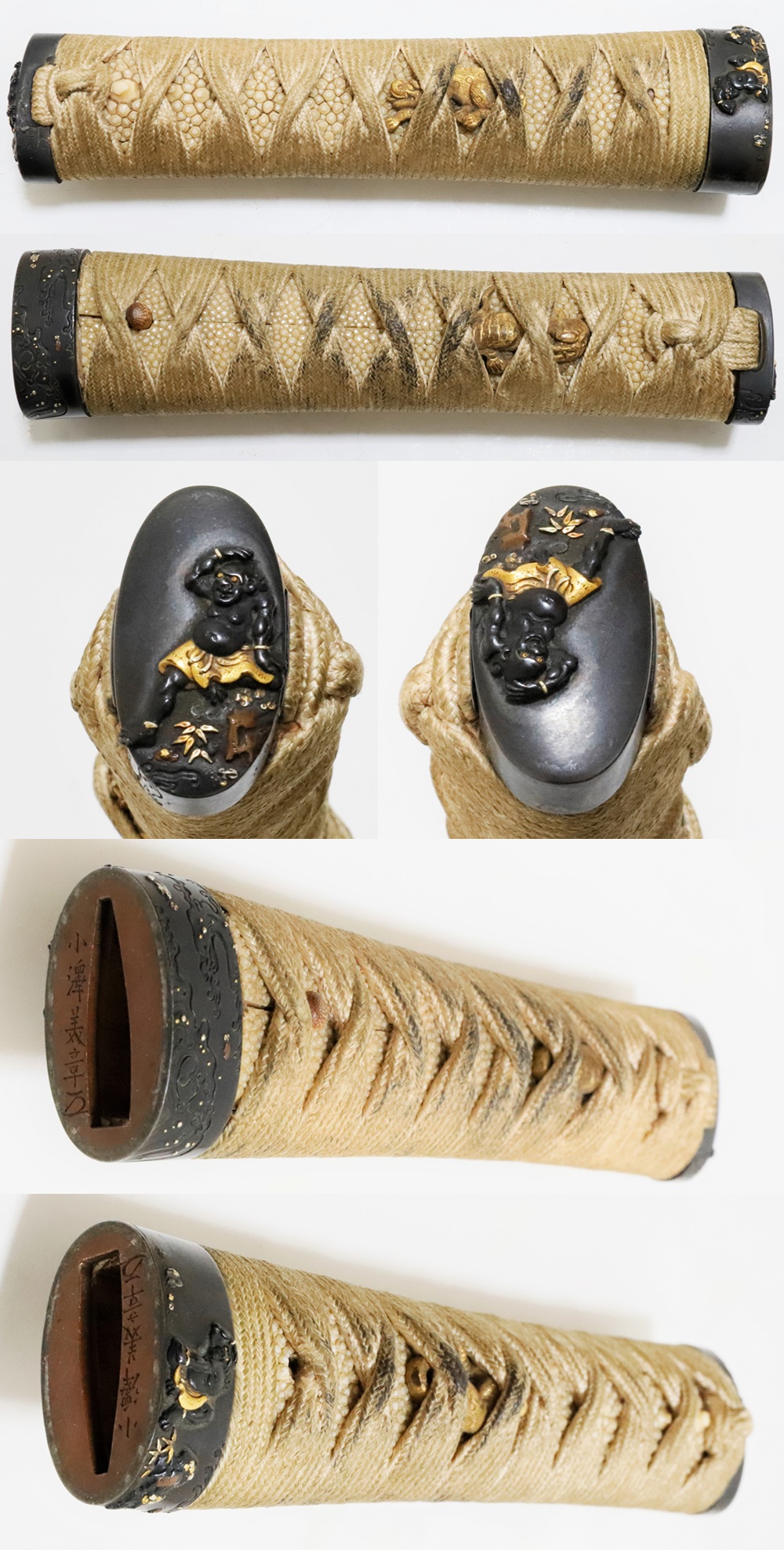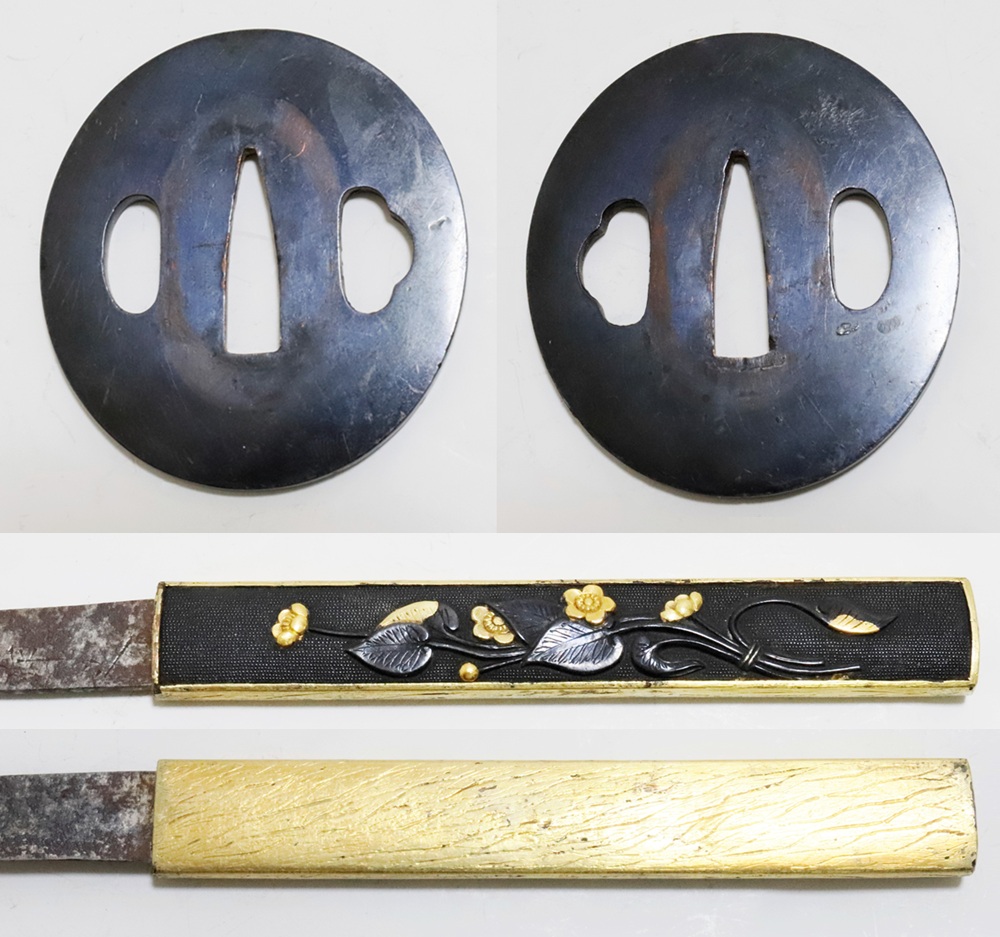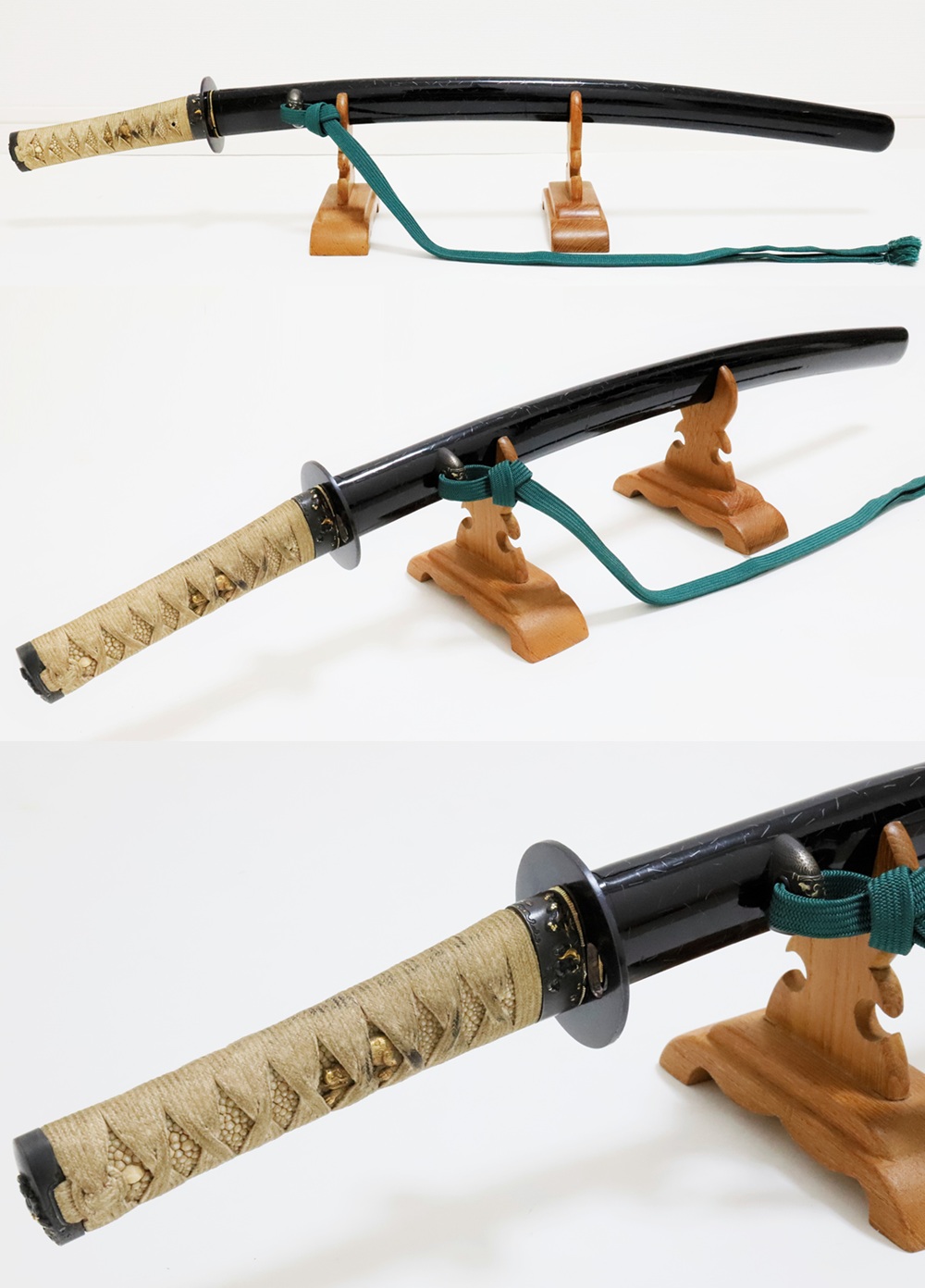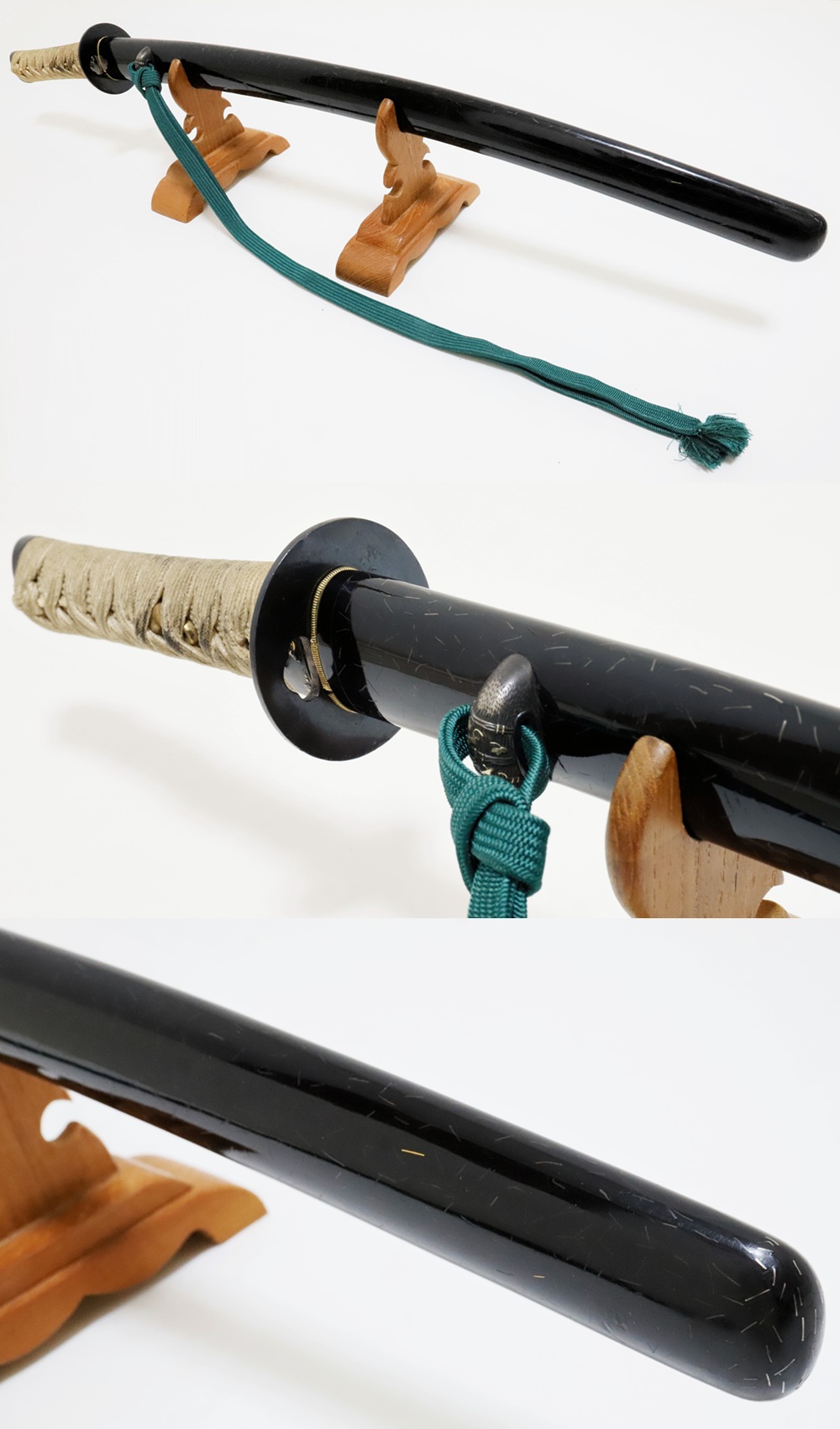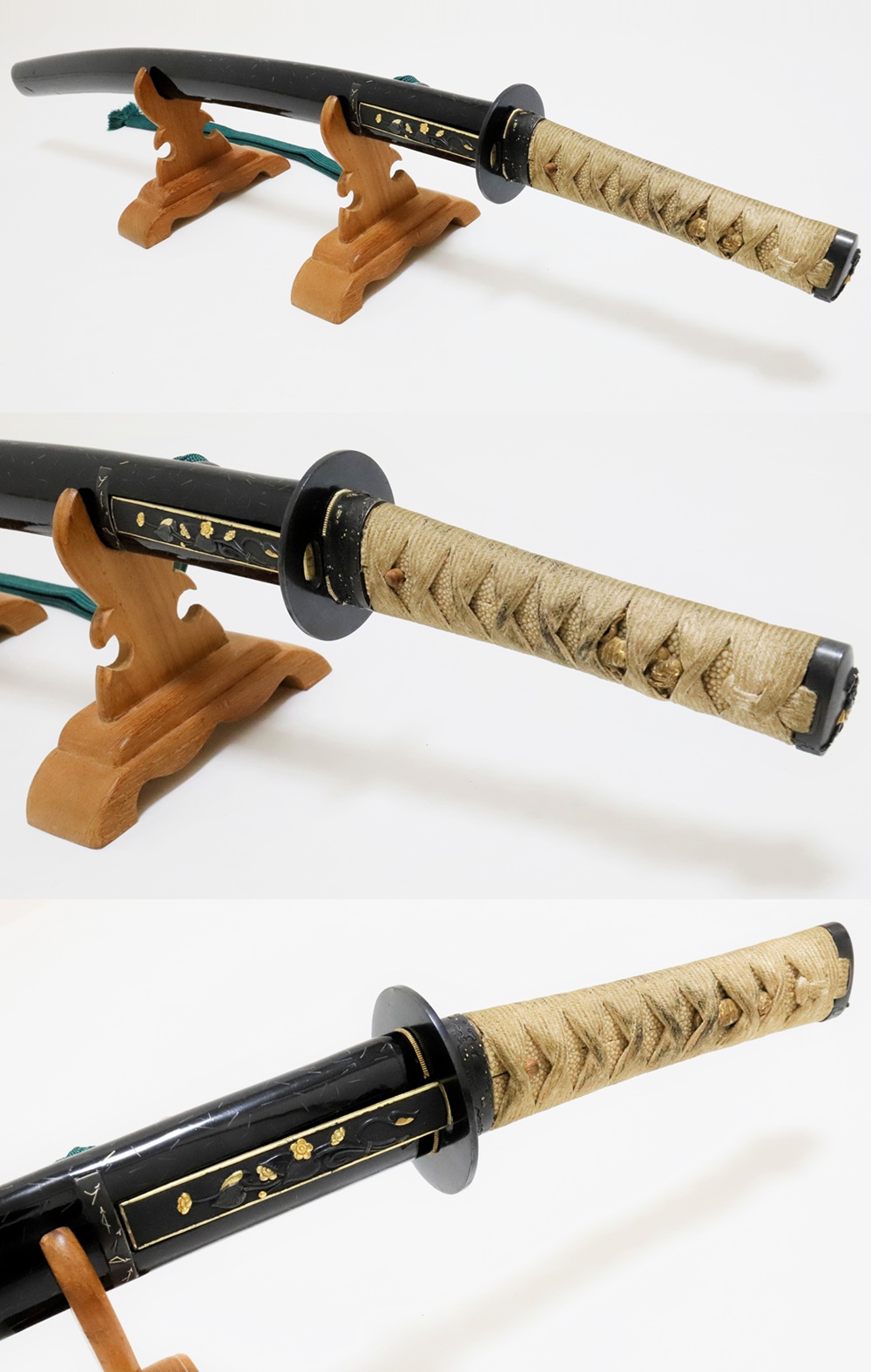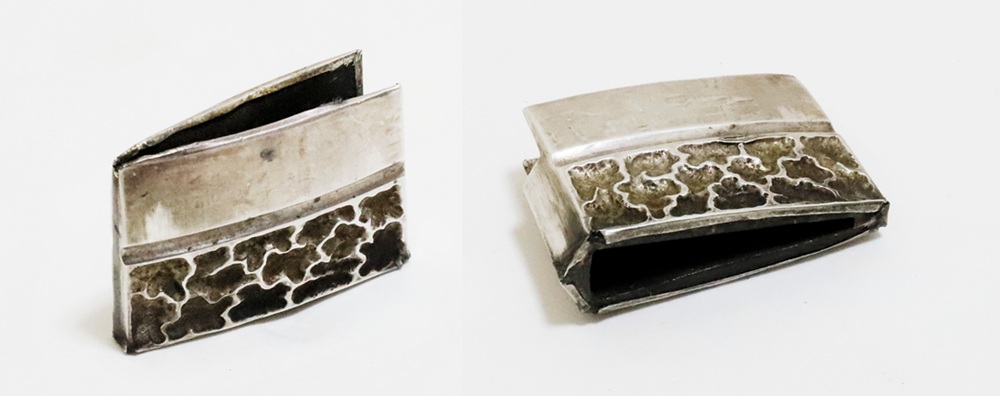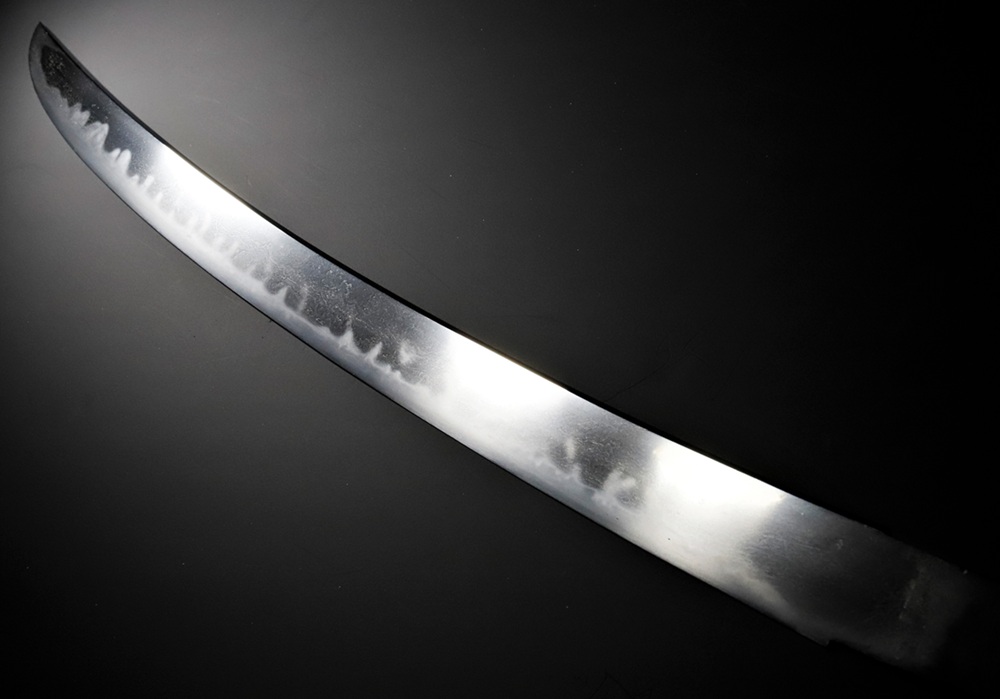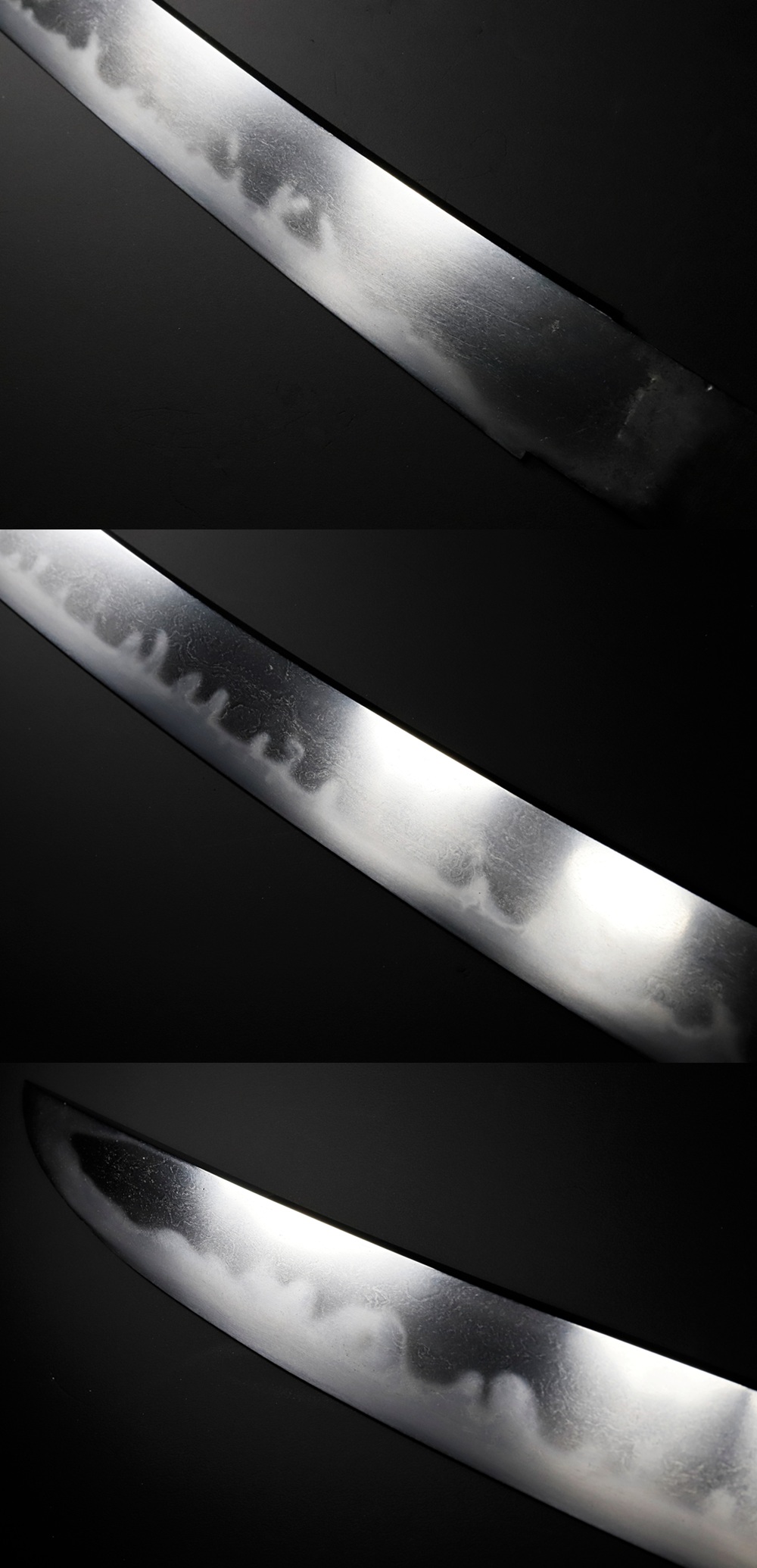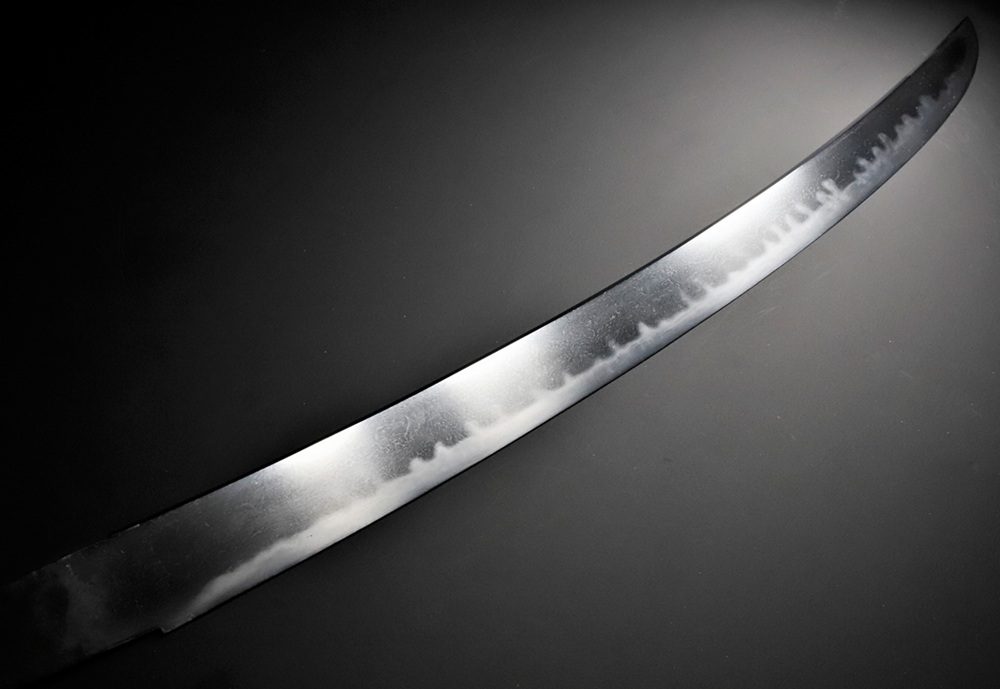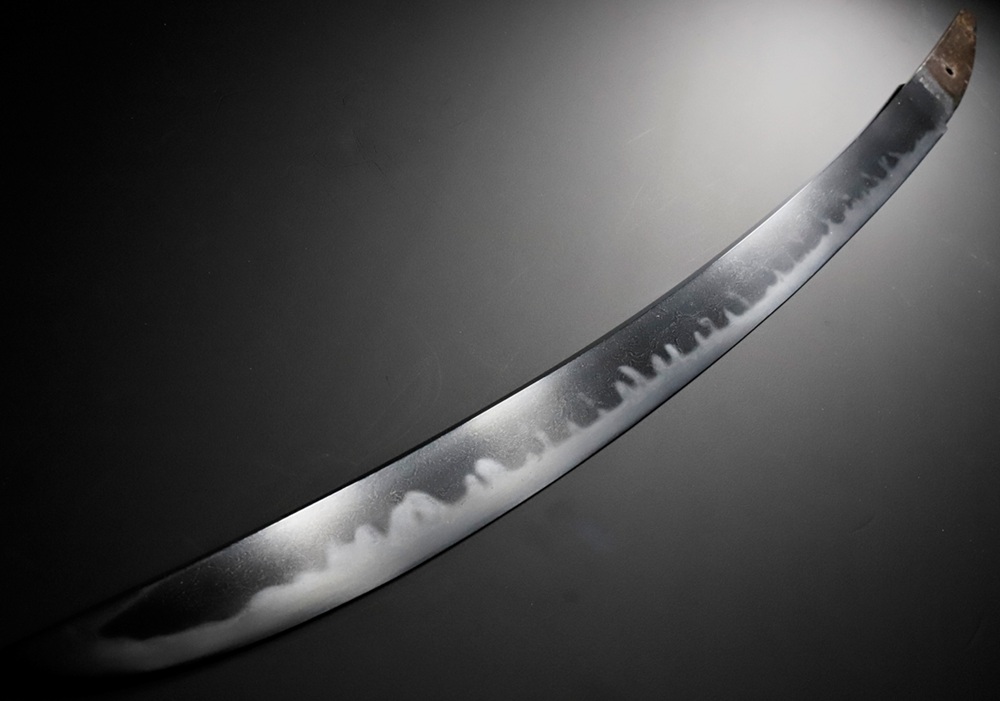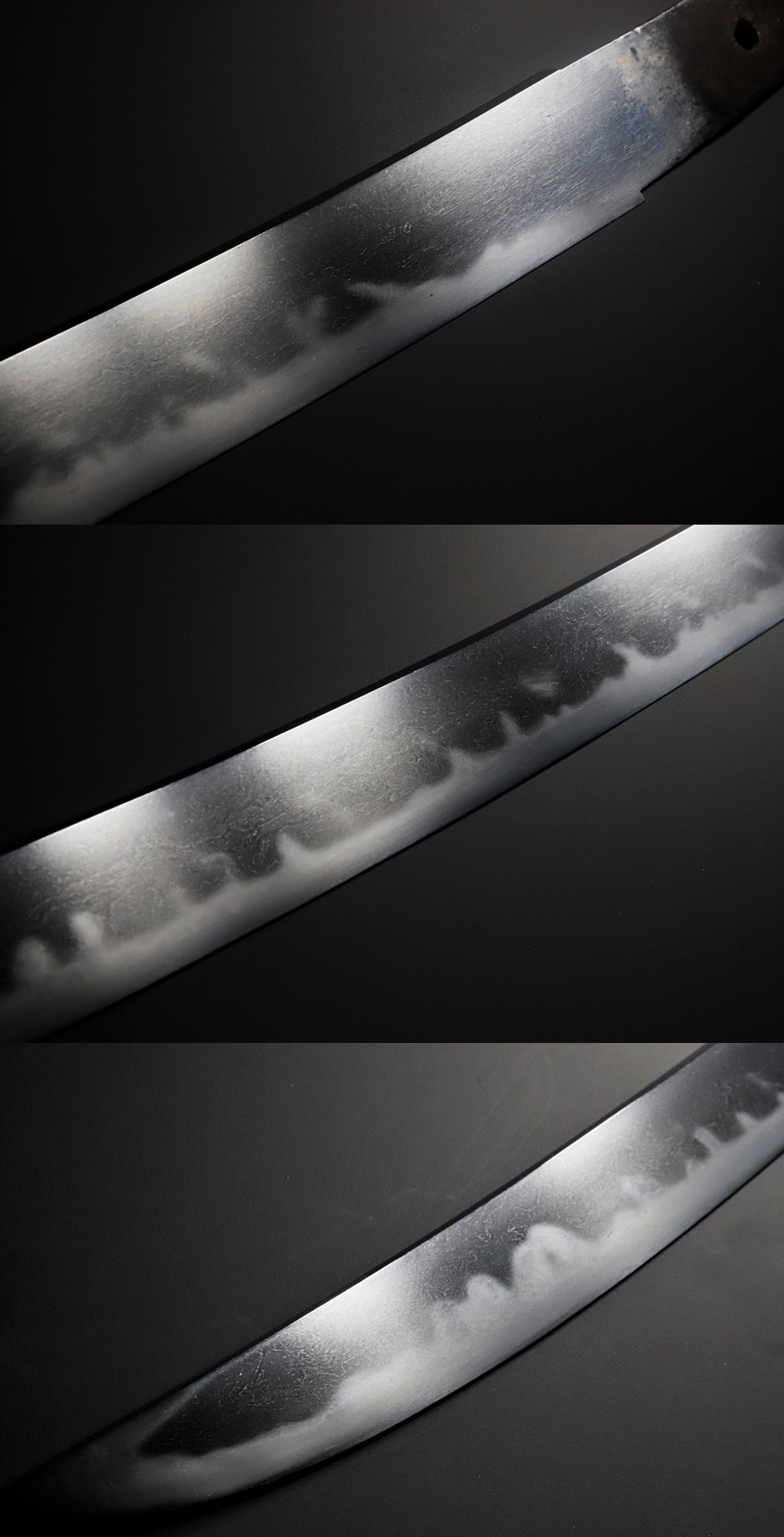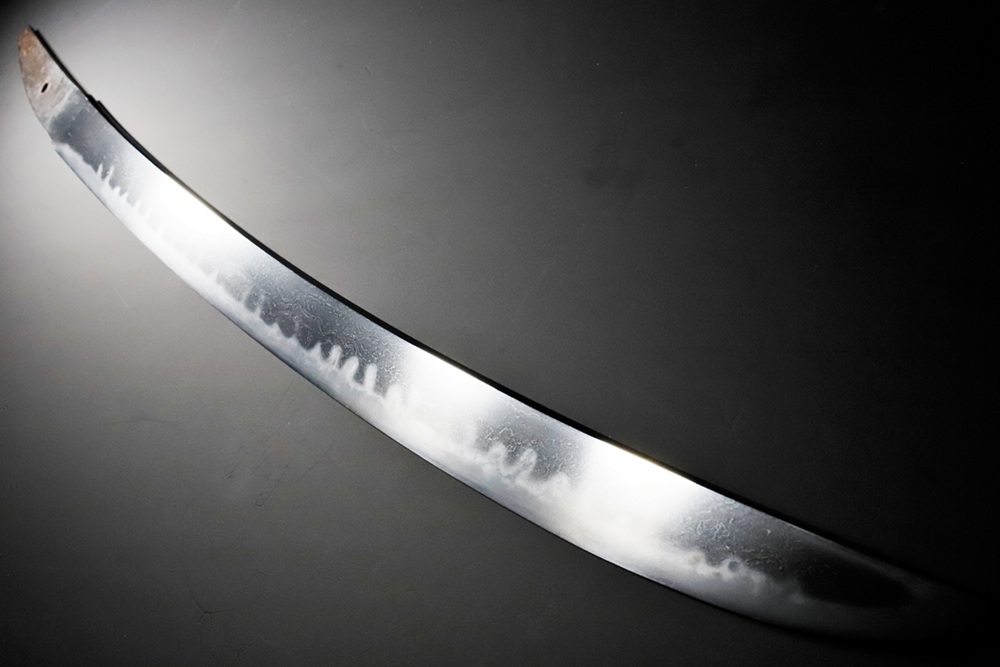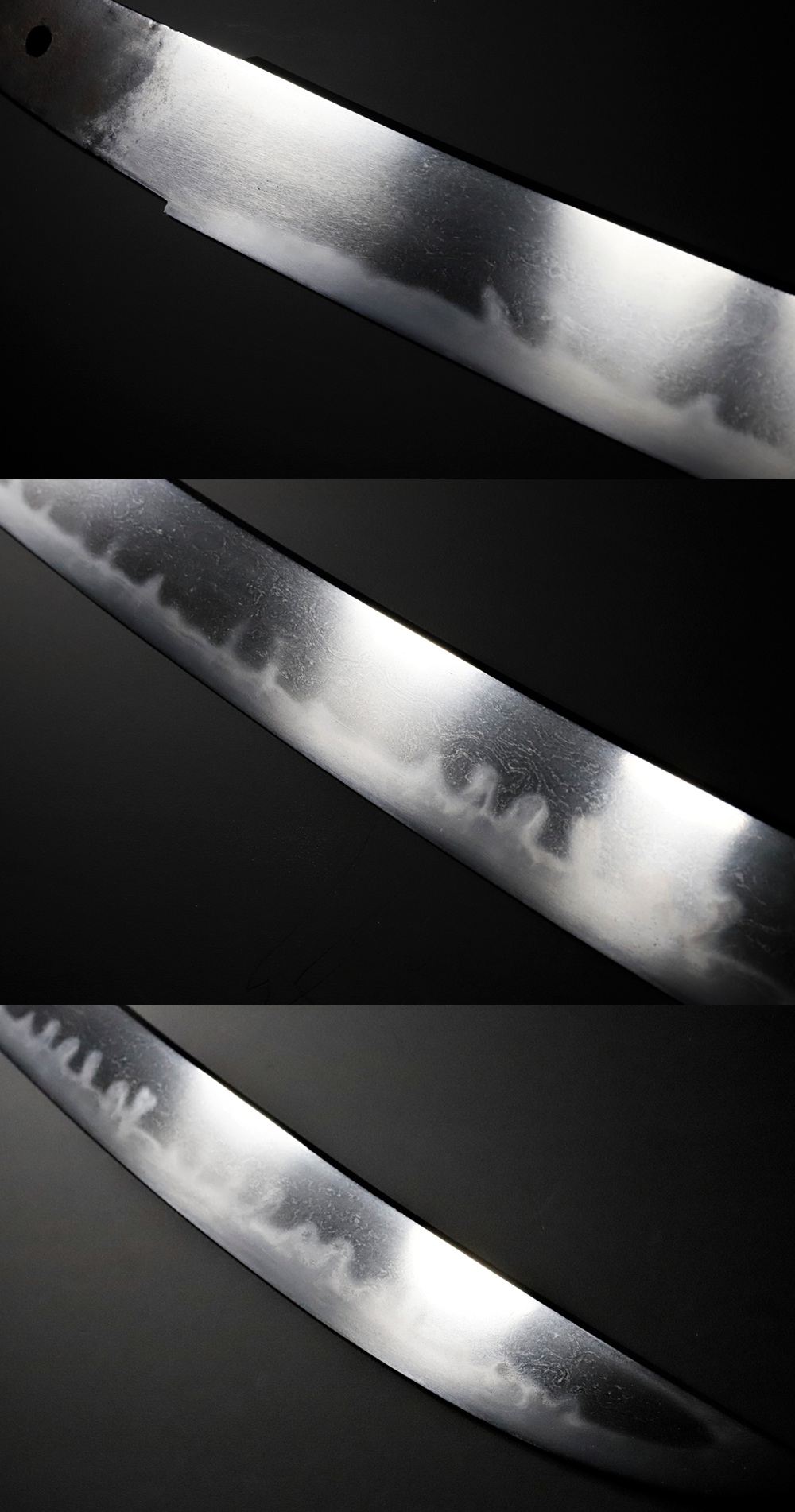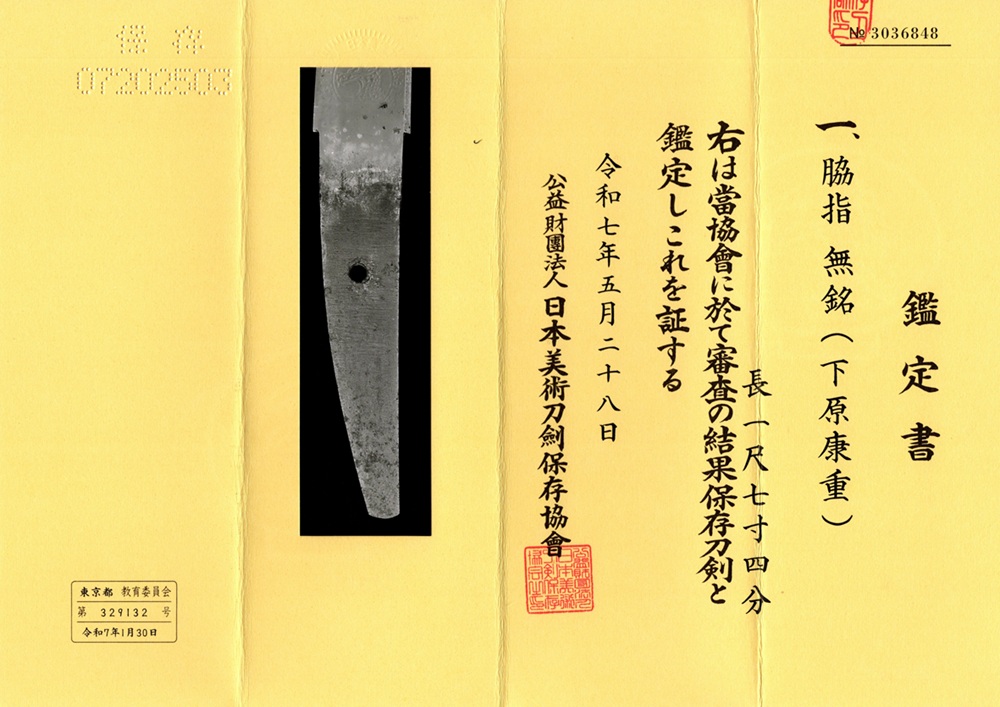
| Product No. WA-0832 無銘(下原康重) | |
|---|---|
| Mei |
Mumei, but has been attributed to Yasushige from Shitahara Back: -- |
| Shape | Hirazukuri Iorimune |
| Region | Musashi Province |
| Era | Early Edo Period |
| Length |
52.7 cm 20.7 in |
| Sori (curvature) |
1.8 cm 0.7 in |
| Motohaba |
3.3 cm 1.3 in |
| Munekasane |
0.7 cm 0.3 in |
| Status | Hozon Token |
| Certification Date | May 28, 2025 |
| Registration Authority | Tokyo |
| Registration Date | January 30, 2025 |
| Jihada (Metal pattern) | Itame and Mokume with faint utsuri |
| Hamon (Temper line) | Sugu-ha base Choji-ha with sunagashi, yo and tobiyaki |
| Bōshi (Point / Tip) | Sugu komaru turn |
| Nakago (Tang) | Ubu, but mumei. Tanago-bara shape, kiri file pattern and a shallow kurijiri end |
| Mekugiana (Rivet holes) | 1 |
| Habaki | Copper base silver foil, Shonai and ganseki type habaki |
| Mountings | Koshirae-tsuki |
| Koshirae | Black-lacquer based short lines rubbed throughout wakizashi koshirae |
| Koshirae Length |
74.8 cm 29.4 in |
| Tsuka Length |
16.6 cm 6.5 in |
| Tsuba | Plain, Shakudo, Kenjo-tsuba |
| Menuki | Tiger |
| Fuchigashira | Hornless Ogre, Mei: Ozawa Yoshiaki |
| Kozuka | Bouquet |
| Other details | White ray skin wrapped ivory color silk Tsumami-maki style Tsuka |
Price |
450,000 JPY |
| This Hirazukuri wakizashi is mumei, but appraised as Yasushige of the Shitahara school. After the fall of the Hojo clan in 1590, the Shitahara smiths served the Tokugawa family, securing their ancestral lands around Hachioji in Musashi Province. Their lineage continued through generations, with sword forging extending into the Meiji era. While over fifty smiths of the Shitahara school, the four most representative masters of this lineage are Yasushige (this wakizashi), Chikashige, Terushige, and Hiroshige. Their style resembles that of the Odawara Sōshū school, but a grain pattern called “jorin-moku” appears in the forging. Yasushige lineage, the master smith of this work, continued for twelve generations from the Koto period (Tenbun era) until the end of the Edo period. This wakizashi, with its characteristic jigane and hamon, and its practical, powerful form, is recognized as a sue-koto. The combination of tanago-hara, the jorin-moku grain pattern, and its excellent workmanship makes the attribution to Yasushige, a master smith of the Shimohara school, appropriate. It comes with a black-lacquer based short lines rubbed throughout koshirae. It passed the Hozon shinsa in 2025. |


